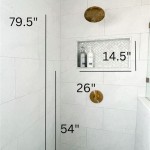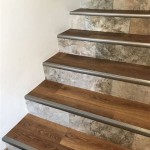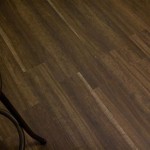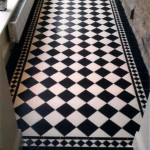Bamboo Hardwood Flooring: Weighing the Pros and Cons
Bamboo flooring has gained significant traction in the construction and home renovation industries as a sustainable and aesthetically pleasing alternative to traditional hardwood. Marketed for its strength, affordability, and environmental friendliness, bamboo flooring presents a compelling option for homeowners and builders alike. However, it's crucial to delve into a balanced assessment of the advantages and disadvantages associated with this material before making a concrete decision. This article examines the various factors that contribute to the appeal and potential drawbacks of bamboo hardwood flooring.
The Allure of Bamboo: Advantages of Bamboo Flooring
The primary draw for many consumers is the perception of bamboo as an environmentally responsible choice. Unlike hardwood trees that require decades to mature, bamboo is a grass that can be harvested and regrown in a relatively short period. This rapid regeneration makes it a renewable resource, reducing the strain on old-growth forests and contributing to a smaller environmental footprint.
Another key advantage is its inherent strength and durability. Quality bamboo flooring, particularly strand-woven bamboo, boasts a high Janka hardness rating, comparable to or even exceeding that of some traditional hardwood species. The Janka hardness scale measures the resistance of wood to indentation. This strength translates to a flooring option that can withstand daily wear and tear, resisting scratches, dents, and other forms of damage common in high-traffic areas.
Cost-effectiveness is another significant benefit. Bamboo flooring often comes at a lower price point than many traditional hardwood options, making it an attractive choice for budget-conscious homeowners. The material costs, combined with relatively straightforward installation procedures, can result in considerable savings compared to other flooring materials.
Beyond its practical benefits, bamboo flooring offers aesthetic appeal. Its natural grain patterns and warm tones can complement a wide range of interior design styles, from contemporary to traditional. Bamboo flooring is also available in a variety of finishes and colors, allowing for customization and personalization to match individual preferences.
Finally, bamboo flooring is relatively easy to maintain. Regular sweeping or vacuuming to remove dust and debris, along with occasional damp mopping, is generally sufficient to keep the floor looking its best. Its resistance to staining and moisture also simplifies cleaning and reduces the risk of permanent damage from spills.
Potential Pitfalls: Disadvantages of Bamboo Flooring
Despite its advantages, bamboo flooring is not without its drawbacks. One critical consideration is the variability in quality. The quality of bamboo flooring can vary significantly depending on the manufacturer, the harvesting methods, and the processing techniques employed. Lower-quality bamboo flooring may be prone to scratching, warping, and other forms of damage, undermining its purported durability.
The manufacturing process of bamboo flooring can also raise environmental concerns. Some manufacturers use adhesives that contain formaldehyde, a known carcinogen. While regulations in many countries limit formaldehyde emissions, it's essential to choose bamboo flooring with low or no-VOC (volatile organic compound) certifications to minimize potential health risks.
While generally resistant to moisture, bamboo flooring is not entirely waterproof. Excessive exposure to moisture can lead to warping, swelling, and discoloration. It's generally not recommended for use in areas with high humidity or frequent water exposure, such as bathrooms or kitchens, unless specifically treated and sealed.
Another potential disadvantage is its susceptibility to scratching, particularly from pet claws or heavy furniture. While high-quality strand-woven bamboo is more resistant to scratches, softer bamboo varieties may require extra care to prevent surface damage. Using rugs in high-traffic areas and placing protective pads under furniture can help mitigate this issue.
Color fading over time is another concern. Prolonged exposure to sunlight can cause bamboo flooring to fade or change color, particularly in areas that receive direct sunlight. Using window coverings or UV-resistant finishes can help minimize fading and maintain the floor's original appearance.
Delving Deeper: Key Considerations When Choosing Bamboo Flooring
The type of bamboo flooring significantly impacts its performance and suitability. There are three primary types: horizontal, vertical, and strand-woven. Horizontal bamboo flooring features wide planks with visible bamboo knuckles, offering a traditional bamboo aesthetic. Vertical bamboo flooring, on the other hand, showcases a more linear and uniform appearance. Strand-woven bamboo is the densest and most durable option, created by compressing bamboo fibers under high pressure.
The finish applied to bamboo flooring plays a crucial role in its appearance, durability, and maintenance. Polyurethane finishes are common, providing a protective layer against scratches and moisture. However, these finishes may contain VOCs. Opting for water-based or UV-cured finishes can reduce VOC emissions and offer a more environmentally friendly alternative.
Installation methods can also influence the performance and longevity of bamboo flooring. Bamboo flooring can be installed using various methods, including glue-down, nail-down, and floating installations. The choice of installation method depends on the subfloor type, the climate, and personal preference. Professional installation is generally recommended to ensure proper installation and prevent potential problems, such as warping or buckling.
Understanding the formaldehyde content of the flooring is paramount. Look for certifications such as FloorScore, which indicates that the flooring meets stringent indoor air quality standards. Formaldehyde emissions can vary depending on the adhesive used in the manufacturing process. Prioritizing low-VOC or no-VOC options is essential for maintaining a healthy indoor environment.
Finally, consider the grain pattern and color variations. Bamboo flooring exhibits natural variations in grain and color. These variations can add character and visual interest to the floor. However, it's important to inspect samples and understand the range of variations to ensure that the final product aligns with expectations. Requesting multiple samples from different production lots can provide a more accurate representation of the overall appearance.
Understanding these aspects is vital for making an informed decision regarding bamboo flooring. Factors such as the type of bamboo, the finish, the installation method, and the formaldehyde content all contribute to the flooring's overall performance and environmental impact.

Bamboo Flooring Pros And Cons Diy Family Handyman

Pros And Cons Of Bamboo Flooring Hgtv

Bamboo Flooring Pros And Cons Forbes Home

Advantages And Disadvantages Of Bamboo Flooring Wood Floors Wide Plank

Pros And Cons Of Bamboo Floors Why We Chose Them For Our House Plaster Disaster

Pros And Cons Of Bamboo Floors Why We Chose Them For Our House Plaster Disaster

Bamboo Flooring Pros Cons Advantages Disadvantages
Product Pros And Cons Hardwood Floors Vs Bamboo Flooring Builder Magazine

Advantages And Disadvantages Of Bamboo Flooring The Company

Bamboo Flooring Pros And Cons Vs Hardwood Laminate Comparison Chart







